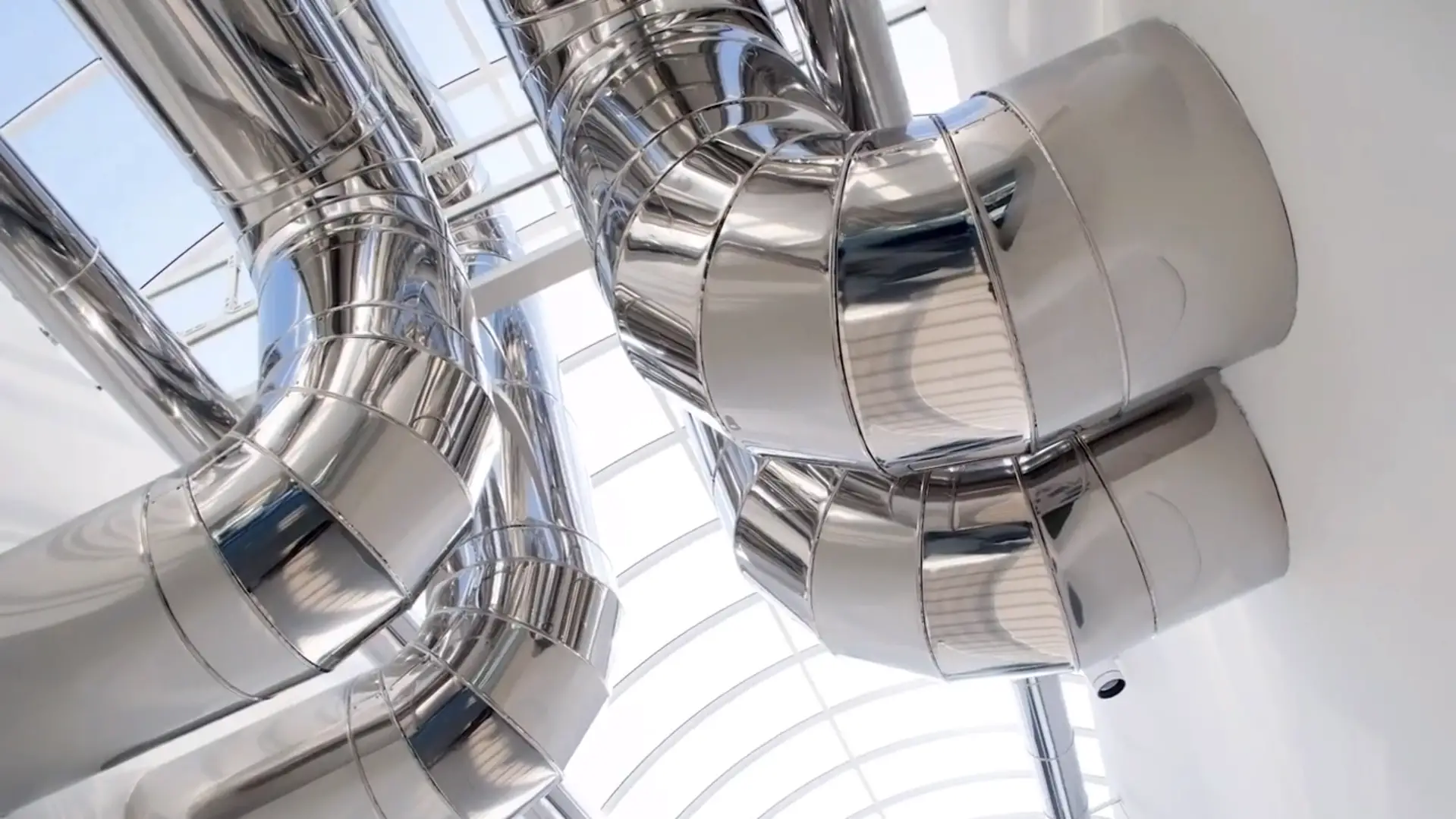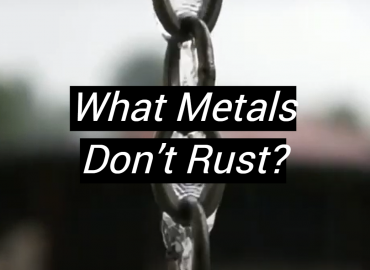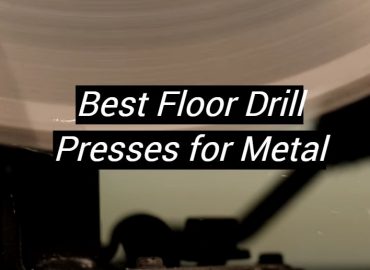When we think about fabrication of metal, sheet metal is probably the first thing that comes to mind. Sheet metal is a versatile material that has become fundamental in a wide range of industries. A lot of spheres of our life simply wouldn’t exist without it. Its unique properties make it an ideal material for constructing everything from tiny electronic components to towering skyscrapers. Sheet metal is a material used by industries for any project that requires metal in a flat, thin form. So why is sheet metal so important in today’s world? Let’s explore.
Sheet metal is fundamental
The Versatility
This metal is amazingly versatile. Its flexibility and malleability mean that it can be formed into any shape or size, making it perfect for everything from car body panels to the simplest metal brackets. Sheet metal comes in a wide range of alloys, each of which has unique properties. For example, aluminum is lightweight and corrosion-resistant, making it an ideal material for the aerospace industry. Copper is ideal for applications that require excellent electrical conductivity, such as electrical wiring or electrical components.
The Durability and Strength
Sheet metal is really durable and strong. Its ability to withstand stress and tension makes it perfect for constructing buildings, bridges, and other structures. Sheet metal is also resistant to corrosion, that’s why it is perfect for use in harsh environments. It is important to say that it is also an excellent material for use in the automotive and transportation industries. They use sheet metal for constructing car bodies, airplane wings, and train carriages. The strength and durability of sheet metal make it a reliable choice for many different applications. [3]
The Cost-Effectiveness
This metal is incredibly cost-effective. Its ability to be formed in different ways means that there is minimal waste created during the process of fabrication. Sheet metal is also recyclable, which reduces the amount of waste generated. Its durability and long lifespan mean that it requires little maintenance, reducing overall operating costs. Sheet metal’s cost-effectiveness makes it an attractive choice for using in almost all spheres of human activity.
The Importance of Excellent Skills for Workers
As we already know, sheet metal is a versatile and essential material, and skilled workers are needed to turn it into useful and innovative products. Sheet metal workers have a lot of responsibilities, including designing, cutting, and bending metal into the desired form. The workers must be highly skilled and knowledgeable in their craft. They must have a deep understanding of the properties of various alloys and the tools and equipment used to form sheet metal precisely. Investing in the employee’s training and development is crucial to ensuring the continued growth of the sheet metal industry.
Sheet Metal and Innovation
The versatility, strength, durability, and cost-effectiveness of this metal have turned it into a crucial material for innovation. Sheet metal has played a significant part in many technological advancements, from the development of the automobile to the creation of modern aircraft. The world of technology is developing all the time, and sheet metal will continue to be a vital part of the process of innovation. The future of sheet metal looks bright, and we can expect to see it used in even more innovative ways in the years to come.
Whether we realize this fact or not, sheet metal impacts many aspects of our daily lives and is critical to our modern world’s development.
A Short History of Sheet Metal Development
From the first days of metalworking to modern-day technology, sheet metal has been necessary for different usages, such as construction industry, aerospace industry, or even automotive one. Manufacturing of sheet metal involves creating a final product by cutting, bending, and shaping the metal. [3]
This work takes its beginning back in ancient times when copper was popular. The Egyptians were known for their copperwork, and with the help of this metal various items like ornaments, jewelry were created. Copper is malleable, making it easy to form into different designs, and it can also withstand corrosion. As time progressed, the use of other metals like bronze, iron, and other alloys became popular in the metal industry. [2]
Sheet metal work gained importance during the modern era, specifically when World War II started, where the demand for airplanes increased. Sheet metal was used to make planes, and the design and quality of the sheet metal used in their construction played an essential role in the success of these aircraft. The metal was cut and shaped into various forms, like the fuselage, wings, and tail. Sheet metal work became more advanced with a focus on precision, durability, and strength.
Advancements in technology and sheet metal work were made in the post-war years. The automotive industry introduced a new range of cars that were sleeker, and the design function was just as important as utility. Sheet metal was used to provide the desired aesthetic look of these cars and was molded and shaped into different designs. Advances in technology permitted more accuracy in the manufacturing of car parts, resulting in better uniformity in the cars.
The Earliest Uses of Sheet Metal Work
Sheet metal work is believed to have originated during the ancient Egyptian civilization, where copper was the primary metal used to produce a variety of practical objects like cooking pots and weapons. The Egyptians used rudimentary tools to hammer and shape the metal sheets and eventually developed techniques to create intricate patterns and shapes. The use of metals in ancient Egypt was widespread in architecture and building as gold, silver, and bronze were used to decorate and enhance various structures. [1]
Later, during Medieval Europe, sheet metal work became prevalent in creating highly sophisticated and complex objects. The medieval realization of labors inspired a new era of metalworking driven by technology and innovations. Improved methods of sharpening and altering metals led to the formation of precise, intricate designs. Large metal objects like cathedral spires, armor, as well as smaller items like metal lamps and candelabra, were crafted during this period.
The Industrial Revolution and Beyond
The industrial revolution made a significant impact on sheet metal work. Before the industrial revolution, sheet metal work was done entirely by hand. Due to the limited technology and tools available, only basic sheet metal products could be made. The introduction of new technologies such as the power press made it possible to cut, shape, and form sheet metal much faster, increasing production rates. Mass production also became possible, allowing the production of large quantities of sheet metal products quickly.
The advancements made during the industrial revolution paved the way for further developments in sheet metal work. With the industrial revolution, the growth of infrastructure was possible, and the demand for sheet metal products increased. This growth led to the need for even more efficient machines and processes to meet the growing demand for sheet metal products. [2]
There are a wide variety of sheet metal products available in the market today, including precision components, HVAC ductwork, storage tanks, and much more. Many sheet metal companies now offer custom-designed products tailored to the customer’s specifications, including custom finishes, colors, and textures.
Benefits of Sheet Metal Work
Sheet metal work has a range of benefits that make it a popular material in industries today. Sheet metal is durable and long-lasting, making it ideal for a wide range of products, including buildings, appliances, and vehicles. It is also highly versatile, allowing it to be used in a variety of applications, including roofing, cladding, gutters, and fire safety systems.
Sheet metal is also highly customizable. Modern technologies such as CNC machines make it easy to customize products to meet the customer’s needs. Finally, sheet metal is highly recyclable. This makes it an ideal material for environmentally conscious individuals and companies.
The Future Appear Bright
The world of sheet metal work has been around for centuries, but with advancements in technology and techniques, the opportunities in this field have expanded. Sheet metal work is used in a variety of industries, from aerospace and construction to automotive and appliance manufacturing. The future of sheet metal work looks bright, with new materials and machines paving the way for even more possibilities. [1]
In Demand Skills:
Sheet metal work requires several skill sets, including the ability to read and interpret blueprints, computer-aided design (CAD) software proficiency, welding, and the ability to use a variety of hand and power tools. These skills continue to be in-demand as companies seek well-trained and experienced technicians to operate state-of-the-art machinery and produce high-quality products.
New Materials:
In recent years, advancements in materials have opened up new possibilities in sheet metal work. Aluminum and titanium, for example, are becoming increasingly popular because of their light-weight, corrosion-resistant properties. These materials are also eco-friendly which is an added plus. Such materials have opened up new industries and designers can create complex shapes and designs that were once impossible to imagine.
Technology Advancements:
Technology advancements continue to revolutionize sheet metal work. Computer-aided design (CAD) software has improved and modern machinery has more precision and accuracy to allow sheet metal work to reach higher levels of efficiency. It also minimizes production time and human error.
Growing Industry:
The sheet metal work industry is growing rapidly, creating new opportunities in the design, development, and manufacturing of products. In addition, the construction and aerospace industries are continuously expanding, ultimately driving demand for sheet metal technicians. Due to the range and breadth of industries that utilize sheet metal, the future looks bright for those in this field.
Artistic Expression:
Sheet metal work can also be an art form. Designers and technicians can shape, cut, and weld sheet metal into beautiful masterpieces that range from sculptures to building facades. This level of creativity and artistic expression can be highly fulfilling to those in this field.
With advancements in materials, technology, and machinery, sheet metal technicians are experiencing new opportunities that lead to expansion and innovation in industries. For those who are interested in this field, there are countless opportunities waiting to be explored.
FAQ
When did sheet metal start?
The earliest evidence of sheet metal dates back to ancient Egypt, around 4,000 BCE. Egyptians used thin sheets of gold to cover the exterior of their tombs and temples. The knowledge to create a sheet of metal was probably passed down from the neighboring Mesopotamian civilization. They used metal for jewelry and other objects. However, sheet metal as we know today did not emerge until the 17th century.
How was sheet metal made in ancient times?
Sheet metal making dates back to the times of ancient Egypt, where they crafted metal into various shapes. The process involved hammering metal into sheets, after which they would be flattened repeatedly until they reached the perfect shape and size. The thickness of the metal ultimately depended on the sheets’ purpose. For instance, thicker metal was used for making weapons, whereas thinner sheets were used for jewelry and decorative pieces.
In Ancient Greece, sheet metal work was privileged as an art form. The Greeks would use fire, casting, and cooling techniques to shape metal. They created unique designs using a technique called repousse, which allowed them to etch intricate patterns and shapes onto the metal sheets. They also used contemporary materials, such as bronze, to make their metal sheets, which indicated their advanced metalworking skills.
Why is it called sheet metal?
The term “sheet” has been used to describe thin, flat objects since ancient times. However, it wasn’t until the 17th century that the word “metal” was added to “sheet” to describe the thin sheets of various metals used for household items, like plates and candlesticks. With the rise of industrialization, the term “sheet metal” gained popularity to describe thin sheets of metal used in manufacturing processes.
When was metal forming invented?
The earliest evidence of metal forming that we know of comes from ancient Egyptian jewelry pieces dating back to 2600 BCE. These pieces featured intricate designs with delicate curves and subtle variations in thickness. Another method of metal forming, casting, emerged around 4000 BCE in Mesopotamia. It involved pouring molten metal into a mold and allowing it to cool, resulting in a solid metal object. The process was used to create a wide range of objects, including weapons, jewelry, and household items.
Did metal exist in the 50s?
The answer to whether or not sheet metal existed in the 50s is a resounding yes. Sheet metal has been around since ancient times, but it wasn’t until the late 1800s that it became an important industrial material. By the 50s, sheet metal had become a vital component in the construction and manufacturing industries. It was used in everything from car bodies and airplane wings to roofing and ventilation systems. Sheet metal was popular because it was durable, flexible, and relatively inexpensive.
Useful Video: Sheet Metal 101: An Introduction to the Sheet Metal Industry
Conclusions
Sheet metal work has come a long way since the ancient Egyptians first began using it to create jewelry and decorative items. From humble beginnings, sheet metal has played a vital role in the development of various industries, from aerospace to automotive. It is a perfect material for any sphere for people’s life, as it can be used anywhere from electronic equipment to skyscrapers’ construction. Today, sheet metal fabrication is an integral part of the manufacturing industry, with cutting-edge technology that allows for precision and accuracy in the final product. The possibilities for sheet metal work are endless, and we can only imagine where the industry will take us in the future.
References:
- https://apiams.com/blog/early-history-sheet-metal/#:~:text=In%201770%2C%20Swiss%20engineer%20Jean,singing%2C%20reverse%2C%20and%20obverse.
- https://www.llpotters.co.uk/blog/a-brief-history-of-sheet-metal/
- https://www.metalworkingworldmagazine.com/a-short-sheet-metal-history/











